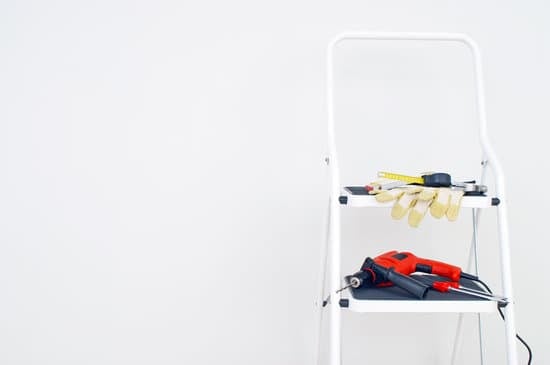Proper heat circulation is crucial for achieving optimal comfort and energy efficiency in our homes. Without it, we may find ourselves battling with uneven temperatures, chilly drafts, or skyrocketing energy bills. Understanding how heat is produced and distributed throughout our living spaces is the first step towards improving circulation and creating a cozy environment.
Heat circulation refers to the movement of warm air from its source to different areas within a home. It ensures that every room receives adequate warmth, eliminating cold spots and creating a more balanced temperature throughout. Beyond just ensuring comfort, effective heat circulation also plays a significant role in energy efficiency. When heat is evenly dispersed, our heating systems can work more efficiently, reducing energy consumption and ultimately saving us money.
To achieve improved heat circulation, it’s important to consider the various elements that contribute to heating distribution in our homes. Heating systems like furnaces or boilers generate warm air that then travels through vents or ducts to reach every corner of the house. Proper insulation helps retain this warmth by preventing its escape through walls, windows, or floors. By understanding these basics, we can identify common issues that hinder heat circulation and implement practical solutions to solve them.
In the following sections of this article, we will delve deeper into understanding the basics of heat circulation and discuss common problems homeowners face. We will then explore different strategies to improve air flow, address insulation upgrades as a key solution for minimizing heat loss, tackle HVAC system maintenance for optimal performance, utilize ceiling fans effectively, consider zoning systems for customized temperature control in different areas of our homes, and offer additional tips and solutions for maximizing heat circulation.
By implementing these strategies within our own living spaces, we can say goodbye to chilly rooms and soaring heating bills. Let’s dive into understanding how we can improve heat circulation in our homes for enhanced comfort and improved energy efficiency.
Understanding the Basics of Heat Circulation
The effective circulation of heat within a home is crucial for maintaining comfort and optimizing energy efficiency. Understanding how heat is produced and distributed in a home can help homeowners identify potential issues and implement solutions to improve heat circulation. This section will explain the basics of heat circulation, focusing on the role of heating systems, vents, and insulation.
Heat Production
Most homes rely on central heating systems to generate heat. These systems typically use either furnaces or boilers, which burn fuel or use electricity to produce heat. Heat is created when fuel or electricity converts energy into thermal energy. Furnaces produce heated air, while boilers produce hot water or steam that is circulated through the house via pipes.
Heat Distribution
Once heat is generated, it needs to be distributed throughout the home. This is typically done through various components such as ducts, vents, and radiators. In forced-air systems, heated air is pushed through ductwork and delivered to different rooms via supply vents.
The return vents then collect cool air and circulate it back to the furnace for reheating. Radiator-based systems work by circulating hot water or steam through pipes and radiators located in different rooms. The heat from the radiator warms up the surrounding air.
The Role of Insulation
Insulation plays an essential role in preventing heat loss during distribution. It acts as a barrier against external temperatures and keeps the warm air inside during cold weather or outside during hot weather. Insulation materials like fiberglass, cellulose, or foam are used in walls, attics, floors, and crawl spaces to minimize thermal transfer.
Understanding these fundamental aspects of heat circulation can help homeowners identify any potential issues that may be hindering efficient heat distribution throughout their homes. In the following sections, we will discuss common problems that impede heat circulation and provide practical tips on improving air flow, upgrading insulation, conducting HVAC system maintenance, utilizing ceiling fans, implementing zoning systems, and considering additional solutions to enhance heat circulation.
Common Heat Circulation Issues
Maintaining proper heat circulation in a home is crucial for optimal comfort and energy efficiency. However, many homeowners face common issues that hinder the circulation of heat throughout their living spaces. By identifying these issues, you can take necessary steps to address them and improve the overall warmth and efficiency of your home.
One of the most common problems that hinder heat circulation is blocked vents. Over time, vents may become obstructed by furniture or other objects, preventing warm air from flowing freely into the room. To remedy this issue, it is important to check all vents regularly and ensure they are clear from any obstructions. Consider rearranging furniture or removing any objects that may be blocking the airflow.
Another common issue is poorly insulated areas in the home. Insulation plays a vital role in keeping warm air inside during cold weather and preventing heat loss. If there are areas in your home with inadequate insulation, such as drafty windows or poorly insulated walls, it can significantly impact the circulation of heat. Consider upgrading insulation in these areas to minimize heat loss and improve overall comfort.
Improperly balanced heating systems can also hinder heat circulation in homes. If certain areas of your home are consistently colder than others, it may indicate an imbalance in your heating system. This could be due to closed or partially closed vents in certain rooms or improper ductwork design.
It is important to ensure that all vents are fully open and unobstructed for proper air distribution throughout the house. If you suspect an imbalance in your heating system, it is recommended to consult a professional HVAC technician who can assess and correct any issues.
Improving Air Flow
Strategic Placement of Furniture
One of the simplest and most effective ways to improve air circulation in your home is by strategically placing your furniture. When furniture obstructs the flow of air, it creates stagnant areas that impede the movement of heat. To ensure proper air circulation, avoid placing large pieces of furniture directly in front of heating vents or radiators. Instead, position your furniture a few inches away from these sources to allow the warm air to circulate freely.
Additionally, consider arranging your furniture to create pathways for the air to flow smoothly throughout the room. This can be achieved by leaving sufficient space between pieces of furniture or using open-back shelves and bookcases that allow the air to move through them. By optimizing the placement of your furniture, you can significantly enhance heat circulation in your home.
Opening/Closing Vents
Another way to improve air circulation is by adjusting your vents properly. In some cases, vents may be closed or partially blocked, restricting airflow and reducing heat circulation. Check all the vents in your home to ensure they are fully open and unobstructed. This includes removing any objects like curtains, rugs, or furniture that may be blocking or limiting airflow around the vents.
Furthermore, consider closing vents in rooms that are rarely used or not frequently occupied, redirecting the warm air towards high-traffic areas instead. This will help prevent warm air from being wasted on unoccupied spaces and ensure that more heated air is distributed evenly throughout the rest of your home.
Clearing Obstructions
Obstructions such as dust build-up on vents and registers can hinder proper airflow and affect heat circulation in your home. Regularly clean these areas using a vacuum cleaner or a soft brush to remove any accumulated dirt or debris. Additionally, make sure there are no obstructions near heating sources like radiators or baseboard heaters.
It’s also important to keep in mind that air needs a clear path to circulate efficiently. Ensure that furniture, drapes, or other items are not blocking the return air vents, which are responsible for drawing in cool air and recirculating it through your heating system. By keeping these areas clear of obstructions, you can improve the overall airflow and enhance heat circulation throughout your home.
Insulation Upgrades
Proper insulation is crucial for improving heat circulation in a home and preventing heat loss. Inadequate insulation can result in drafts, chilly rooms, and increased energy costs. Therefore, it is important to understand the significance of proper insulation and consider upgrading it in key areas such as attics, walls, and floors.
1. Attic Insulation:
The attic is one of the primary areas where heat loss occurs. Adding or upgrading insulation in the attic can significantly improve heat circulation throughout the home. There are several types of insulation materials available, including fiberglass batts, blown-in cellulose or fiberglass, spray foam, and rigid foam boards. Consider consulting a professional to determine the most suitable insulation material for your attic based on factors like climate, budget, and energy efficiency goals.
2. Wall Insulation:
Inadequately insulated walls can contribute to heat loss in a home. When upgrading wall insulation, there are a few options to consider. If your home has unfinished walls or ongoing renovations, you can add batt or blown-in fiberglass or cellulose insulation between the wall studs. For already finished walls, you can opt for retrofitting techniques such as injection foam or blown-in cellulose through small holes drilled into the wall’s exterior or interior.
3. Floor Insulation:
Floors that are not properly insulated can lead to cold spots and discomfort in certain areas of a home. To prevent heat loss through floors, consider insulating crawl spaces or basements beneath them with rigid foam boards or spray foam insulation. Additionally, installing carpeting or rugs can provide an extra layer of thermal resistance.
By addressing these key areas with proper insulation upgrades, homeowners can enhance their home’s heat circulation and reduce energy waste caused by heat loss. It is advisable to consult with professionals before embarking on any insulation upgrades to ensure efficiency, safety, and compliance with local building codes.
HVAC System Maintenance
Regular HVAC system maintenance is crucial for optimal heat circulation in a home. Neglecting maintenance tasks can result in decreased efficiency, compromised indoor air quality, and uneven heating throughout the house. This section highlights the significance of regular HVAC system maintenance and provides insights into the various tasks involved.
One of the key maintenance tasks is cleaning or replacing air filters. Over time, these filters can become clogged with dust, dirt, and other pollutants, restricting airflow and reducing heat circulation. Homeowners should check their filters regularly and clean or replace them as necessary. This simple task can greatly improve heat circulation and overall system performance.
In addition to filters, ducts and registers also require regular attention. These components can accumulate dust, debris, and even mold if not properly maintained. Dirty ducts can impede airflow, leading to poor heat circulation and potential health hazards due to increased allergens or contaminants in the air. Regular duct cleaning is essential to remove any buildup and ensure proper heat distribution throughout the home.
Tuning the HVAC system is another important aspect of maintenance for optimal heat circulation. This involves inspecting and adjusting various components of the system to achieve balanced air distribution across all rooms. A professional HVAC technician can assess the system’s performance, calibrate dampers for better control of airflow, balance registers to avoid hot or cold spots, and optimize settings for maximum energy efficiency.
Regular HVAC system maintenance not only improves heat circulation but also extends the lifespan of the equipment, reduces energy consumption, and lowers utility bills. It is recommended to schedule professional maintenance at least once a year before each heating season. Implementing these maintenance practices ensures that your HVAC system operates efficiently year-round while providing optimal comfort in every corner of your home.
| Maintenance Task | Recommended Frequency |
|---|---|
| Cleaning/Replacing Air Filters | Every 1-3 months |
| Duct Cleaning | Every 3-5 years |
| Tuning the HVAC System | Annually |
Utilizing Ceiling Fans
Ceiling fans play a crucial role in improving heat circulation in homes. They are not just fixtures for keeping rooms cool during the summer; they can also be utilized to enhance heat distribution during the winter months. By understanding how to optimize the use of ceiling fans throughout the year, homeowners can significantly improve their comfort and energy efficiency.
During the summer, ceiling fans create a cooling effect by creating a breeze that evaporates moisture on our skin, making us feel cooler. However, it is important to note that ceiling fans do not actually lower the temperature in a room. Therefore, it is unnecessary and wasteful to keep ceiling fans running when no one is in the room.
In fact, doing so only wastes energy as the fan generates heat itself. To maximize efficiency during hot weather, it is recommended to set the fan to rotate counterclockwise or on its highest speed setting.
During the winter months, many homeowners may question why they should still use ceiling fans even when heating their homes. The reason lies in utilizing ceiling fans to circulate warm air throughout the living space. Warm air tends to rise naturally and get trapped near ceilings while cooler air lingers at floor level.
By running ceiling fans on low speed and reversing their direction (clockwise), warm air can be redirected downward and circulated back into the room. This allows for more balanced warmth and prevents any chilly spots from forming.
In order to effectively utilize ceiling fans for improved heat circulation during both seasons, it is important to consider their placement within rooms. For optimal performance, ceiling fans should ideally be installed about 8-9 feet above ground level with blades positioned approximately 10-12 inches below ceilings. This ensures that airflow is distributed evenly without causing discomfort or disruption due to low-hanging fixtures or furniture.
| Season | Fan Direction | Fan Speed |
|---|---|---|
| Summer | Counterclockwise | Highest speed setting |
| Winter | Clockwise | Low speed setting |
Zoning Systems
Heating our homes is not a one-size-fits-all solution. Different areas of a home have varying heating needs based on factors such as location, sunlight exposure, and usage patterns. This is where zoning systems come into play, offering a customized approach to heat circulation that can improve comfort and energy efficiency.
Zoning systems divide the home into separate zones, each with its own thermostat and heating controls. By doing so, homeowners can independently regulate the temperature in different areas of their homes, ensuring that heat is distributed efficiently where it is needed the most. For example, rooms with large windows or high ceilings may require more heat than smaller, well-insulated areas.
Implementing a zoning system involves installing dampers within the ductwork of your HVAC system. These dampers can open or close to control the flow of warm air into different zones. Each zone is then equipped with its own thermostat, allowing occupants to set their desired temperature levels individually. This level of customization can be particularly useful for multi-level homes or those with basement areas that tend to be cooler than the rest of the house.
The benefits of zoning systems go beyond just comfort and convenience. By delivering heat only where it’s needed at any given time, these systems help reduce energy consumption and lower utility bills. Homeowners have reported up to 30% energy savings after implementing a zoning system in their homes.
With advancements in technology, many modern zoning systems come equipped with wireless controls that allow users to adjust temperatures remotely using their smartphones or other devices. Some even integrate with smart home hubs and voice-activated assistants for added convenience.
Zoning systems offer an effective solution to customize heat circulation within a home based on individual needs and preferences. By directing warm air only where it’s needed and avoiding unnecessary heating in unoccupied areas, homeowners can improve both comfort and energy efficiency simultaneously. Consider implementing this innovative technology to enjoy a more comfortable and cost-effective living space.
Additional Solutions
In addition to the previous strategies mentioned, there are several other solutions that can further enhance heat circulation in a home. One effective method is to use window treatments to minimize heat loss. Windows are one of the main sources of heat transfer, especially if they are old or poorly insulated.
By using heavy curtains, blinds, or thermal shades, homeowners can create an additional barrier against cold air drafts and prevent warm air from escaping through the windows. Additionally, adding weatherstripping or caulk around the windows can further seal any gaps and reduce heat loss.
Another solution that can be employed is strategically using space heaters. While it may seem counterintuitive to use additional heating devices, space heaters can be useful in targeting specific areas that require extra warmth.
For example, if there is a room that tends to be colder than others due to its size or insulation issues, placing a space heater in that room can provide localized heat circulation without overwhelming the entire house with excessive heating. However, it’s essential to follow safety precautions when using space heaters by keeping them away from flammable materials and avoiding leaving them unattended.
Consideration of humidity levels also plays a vital role in optimizing heat circulation within a home. Dry air tends to feel cooler than humid air at the same temperature because it accelerates moisture evaporation from our bodies, leading us to feel colder than we actually are.
Utilizing a humidifier during winter months can add moisture back into the air, making it easier for residents to stay comfortable even at slightly lower temperatures. By maintaining an appropriate humidity level between 30% – 50%, individuals may find themselves feeling warmer without relying heavily on heating systems.
Implementing these additional solutions can contribute significantly to improving heat circulation in homes and increasing overall comfort during cold seasons. By reducing heat loss through window treatments, strategically utilizing space heaters, and considering humidity levels as a factor, homeowners can achieve a more balanced and efficient heat distribution throughout their living space.
Conclusion
In conclusion, understanding and improving heat circulation in the home is essential for both comfort and energy efficiency. By implementing the strategies discussed in this article, homeowners can create a more comfortable living environment while also reducing their energy consumption and costs.
One of the key takeaways from this article is the importance of identifying common heat circulation issues in homes. Blocked vents, poorly insulated areas, and improperly balanced heating systems can all hinder the distribution of heat throughout the home. By addressing these issues, such as by clearing obstructions, upgrading insulation, and ensuring proper maintenance of HVAC systems, homeowners can significantly improve heat circulation.
Furthermore, practical tips such as strategically placing furniture, utilizing ceiling fans effectively, and considering zoning systems can further enhance heat circulation in different areas of the home. These solutions allow for customized control over air flow and temperature regulation.
Frequently Asked Questions
How can I improve my heat circulation?
There are several ways to improve heat circulation in your home. One effective method is to ensure that your heating system is working efficiently. Regular maintenance, such as cleaning or replacing filters and checking for any blockages in the ductwork, can help improve airflow and distribute heat more evenly. Another option is to utilize fans strategically around the house.
Positioning fans near windows or doors can help draw in cooler air from outside while pushing warm air towards colder areas of the room. Additionally, adjusting furniture arrangements to allow for better airflow can make a difference. Placing large furniture pieces away from vents or radiators allows heat to circulate freely rather than getting trapped behind obstacles.
How do you increase heat flow in a room?
Increasing heat flow in a room requires some simple steps that can make a noticeable difference. One effective way is to keep interior doors open, allowing warm air to flow freely throughout the space. If you have rooms that are consistently colder than others, consider using door draft stoppers or weatherstripping to prevent drafts and cold air infiltration, which hinder heat flow.
To maximize warmth, you can also utilize window treatments effectively by opening curtains during the day to let sunlight in and closing them at night to prevent heat loss through windows. Removing any obstructions like furniture or drapes that block radiators or vents can also help enhance heat flow.
What causes poor air circulation in house?
Poor air circulation in a house can be caused by several factors. One common reason is inadequate ventilation, which prevents fresh air from entering while trapping stale indoor air inside. This can happen when homes are tightly sealed for energy efficiency purposes but lack proper ventilation systems such as exhaust fans or vents in kitchens and bathrooms that remove moisture and odors while allowing fresh air to enter.
Another cause of poor airflow can be blocked or improperly placed vents and registers, preventing heated or cooled air from circulating effectively throughout the house. Additionally, the placement of furniture or other objects near vents may obstruct airflow and lead to poor circulation within a room.

I’m thrilled to have you here as a part of the Remodeling Top community. This is where my journey as an architect and remodeling enthusiast intersects with your passion for transforming houses into dream homes.





